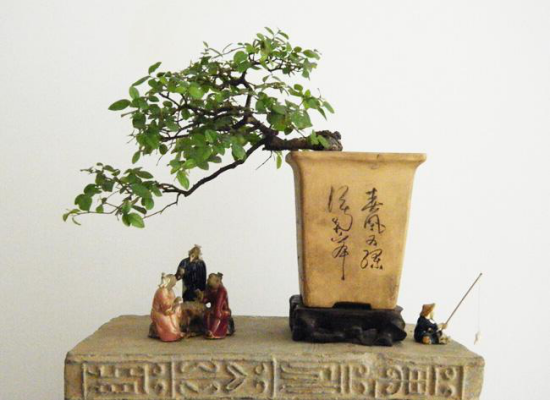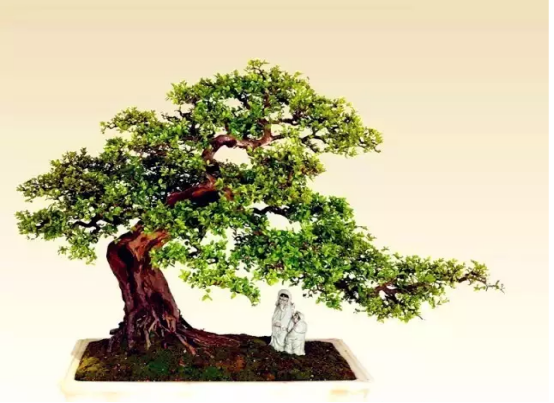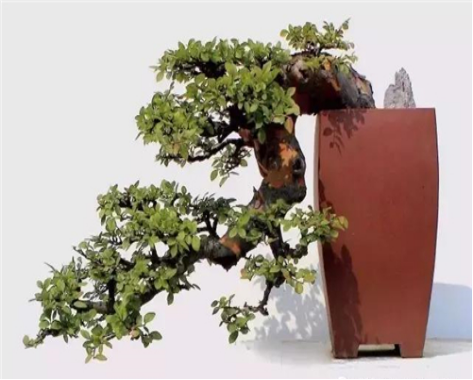Five points for attention in the maintenance of Finch Plum
Moisture content
Sparrow plum conservation water slightly pay attention to, the water used to river water, pond water, Rain Water and other natural water is better. If the tap water needs to be stored for a day or two, it is appropriate to volatilize the chlorine in the water. The water used to wash clothes, the water containing oil stains and salt can not be used.
Fertilizer application
Finch plum should be fertilized properly, too many branches and leaves will grow, which will affect the overall shape. If there is a lack of fertilizer, the branches are thin and weak, and they are very sick and ugly. Therefore, we should grasp the degree of fertilization: spring is in the period of growth and development, so we should apply more fertilizer. Vice versa in autumn. In winter, remember not to apply fertilizer. Flower friends must also know that it is not suitable to fertilize flowers when it is in the direct sun at noon and when it rains. It is best to apply fertilizer on cloudy days or in the evening. When the basin soil is dry, loosen the soil so that the fertilizer can infiltrate into the soil better.
Soil
The sparrow plum stump has a well-developed root system, drought and waterlogging resistance. once it is dug and planted in a shallow basin, the growth environment will shrink, and if there is a slight mistake, it may die, so it should be taken care of meticulously. To choose breathable and loose flower mud, it is best to put more soil in the flowerpot during maintenance. The basin soil should be changed every two years and some base fertilizer should be added to ensure that the soil is fertile so that Finch plum can grow well.

Pruning should be timely.
The general pruning time is suitable in late spring and early autumn, when the sprouting ability of sparrow plum stump is the strongest and the growth is the most prosperous. Cut off long branches, overlapping branches, cross branches, radiant branches, withered branches, diseases and insect pests at any time. However, it should be noted that in summer high temperature, it is easy to sunburn new leaves, resulting in curling, therefore, after pruning, it is best to put it in a cool place to see strong light after sprouting normally.
Pest control
The pest of Finch plum is not very worrying. The pests of Finch plum are mainly longicorn beetles, and longicorn beetles are also called heart-drilling beetles. after biting through the bark of Finch plum, the female longicorn beetles will lay eggs on the branches and keep eating them as soon as they hatch. when they grow into adults, they will enter the trunk and heart of the tree, and slowly Finch will be eaten empty and withered by insects, so when controlling insect pests, they will locate their position according to their feces. Then insert the thin iron wire into the punch and stab it to death, or soak the cotton ball with 200 times the liquid and plug the punch, so that the worm is poisoned by medicine, and finally block the insect mouth with wet mud.
How to make Finch Plum Bonsai maintenance method
Because the sparrow plum root stem is naturally strange, the tree posture is vigorous and quaint, the adaptability is very strong, and the soil quality requirements are not very strict, so many people like to make Finch plum into bonsai and watch it at home. Then how to make the sparrow plum bonsai and how to maintain the sparrow plum bonsai? Next, I would like to introduce the production method of sparrow plum bonsai and the maintenance method of sparrow plum bonsai.
How to make sparrow plum bonsai
1. Draw materials:
For making Finch plum bonsai, annual branches can be selected for cutting propagation in March or Meiyu season, and striping propagation can also be carried out from April to June: when the fruit is ripe, it can be sowed along with the seeds or sowed in the seedling bed after being dried in the shade; in the provinces south of the Yangtze River, wild old root piles or young trees can also be excavated in the wild mountains, and soil pots can be processed after "raising billets" are planted in the field.
2. Modeling:
Finch plum has the advantages of strong growth, long life, easy modeling, strong germination, resistance to pruning, soft twigs and easy banding. Most of them are processed by coarse binding and fine shearing, and the complete pruning method (that is, "storing branches and cutting dry method") can also be used. The tree shape is often made into oblique dry type, horizontal dry type, curved dry type, dry type, double dry type, cliff type, root lifting type and so on. Most of the leaves are trimmed into natural style, or they can be processed into cloud flakes or steamed buns.
3. Put on the basin:
It is appropriate to transplant into the pot before sprouting in February-March in spring. Choose lighter purple sand basin or glazed pottery basin, basin shape to lighter or medium-deep rectangular basin, oval basin is appropriate. The basin soil should be made of loose and fertile slightly acidic rotten leaves, river mud and pond mud mixed with sand. When planting in the soil basin, the root system should be properly trimmed, the lateral root and fibrous root should be obstructed to loosen the fertile soil, and the bottom of the basin should be covered with rubble to facilitate drainage and ventilation.
Maintenance method of sparrow plum bonsai
1. Water should be adequate.
The water used is better than natural water such as river water, pond water and Rain Water. If tap water needs to be stored for a day or two, it is more appropriate to make the chlorine run away and reuse. Laundry water containing soap, and water with oil and salt should never be used.
2. Attention should be paid to fertilization
Finch plum fertilizer is applied too much, branches and leaves grow, lack of fertilizer, the branches are thin and weak, the leaves turn yellow, and are vulnerable to diseases and insect pests. Therefore, fertilization should have principles: newly planted, first pot, just changed pot, root damage within a month can not be fertilized. In spring and summer, when potted trees grow in peak season, more fertilizer must be applied. After autumn, potted trees should be applied less if they grow slowly. In winter, potted trees can stop fertilizing when they go dormant. It is not suitable to apply fertilizer around noon in rainy days or midsummer. The application of fertilizer solution is best in cloudy days or in the evening, when the basin soil is slightly dry, it is necessary to loosen the soil to facilitate the infiltration of fertilizer and water into the soil. In order to speed up the decomposition of fertilizer, it must be drenched the next morning.
3. The basin soil should be better.
The sparrow plum stump originally grew in the wild area, with well-developed roots, drought and waterlogging tolerance, once it was dug up and planted in a shallow basin close at hand, the growth conditions were limited, such as improper maintenance and easy death, so it should be taken care of very carefully. To choose a well-drained flower paste, during maintenance, the basin soil had better be thicker. Change the new soil every two years and apply some base fertilizer to protect the fertile soil in order to make the pile scene grow normally.
4. Pruning should be timely.
The general pruning time is suitable in late spring and early autumn, when the sprouting ability of sparrow plum stump is the strongest and the growth is the most prosperous. Cut off long branches, overlapping branches, cross branches, radiant branches, withered branches, diseases and insect pests at any time. However, it should be noted that in hot weather, it is easy to burn new buds, so as to roll leaves, therefore, after pruning, it is best to put it in a cool place to see strong light after sprouting normally.
5. Pay attention to raising new piles
New piles on the balcony are different from the ground. Planting too early or too late will bring a lot of trouble to maintenance and management, and the survival rate is low, so mining or buying pot time must be timely. The best time should be 15 to 20 days before the local sparrow plum germination, it is better to dig or buy piles on the pot, usually around March 10. At this time, the weather is getting warmer, the amount of rain is also slowly increasing, the air humidity is high, there will be no big freezing damage, and the new piles dug out have recovered and germinated, accumulated nutrients, and planted in the pot. The wound heals quickly, the regeneration ability is strong, and the survival rate is high. It will sprout and grow leaves in half a month.
Due to the unfavorable factors such as strong wind, dryness and small space on the balcony, it is not suitable to plant new piles in autumn. The most important thing in pile selection is to pay attention to whether the pile billet is fresh or not, and to select small and medium-sized pile billets with strong growth and more roots. Large pile blanks should not be cultivated on the balcony.
The above is for you to introduce the sparrow plum bonsai production methods and sparrow plum bonsai maintenance methods, I hope to help you, more household knowledge, please pay attention.
Production and maintenance of sparrow plum bonsai
The sparrow plum, known as the "seven sages of bonsai", plays an important role in Chinese gardens. Sparrow plum belongs to Rhamnaceae with vigorous and quaint shape. It is one of the five famous trees in Lingnan bonsai and one of the first tree species to spread to the world from China. Sparrow plum fruit is edible, sweet and sour in taste, also known as sour plum fruit.
The production of sparrow plum bonsai
If you want to cultivate sparrow plum, you can refer to the following steps:
The main results are as follows: 1. The branches are propagated by cuttings in the rainy season every year, and striped propagation is carried out after the rainy season, or the old roots and new seedlings are cultivated respectively.
2. The growth of sparrow plum is very strong, resistant to pruning, easy to shape and soft branches. Prune the branches properly to ensure that nutrients do not flow out.
3, the best season for the basin is in spring, the choice of the basin is the light purple sand basin or glazed pottery basin, and the oval one is the best. The soil can be proportioned with river mud, pond mud and slightly acidic rotten leaf soil in Gaza. Before entering the basin, the roots should be properly trimmed and rubble should be placed in the basin for drainage and ventilation.
Maintenance of sparrow plum bonsai
If we want to cultivate sparrow plum well, in addition to the basic skills, we also need to take proper care of it. As for maintenance, we can start with humidity and temperature.
Sparrow plum likes hot and humid climate, and the appropriate cultivation environment should be 70%, 80%. If the humidity is too low, it will cause yellowing and shedding of the lower leaves. As the sparrow plum is a subtropical tree species, so like high temperature, the lowest temperature of the cultivation environment had better not be lower than 10 ℃, before and after frost, to do a good job of sparrow plum heat preservation work. Spring, summer and autumn are the peak growing seasons of sparrow plum. In summer, Finch plum should be put in a well-ventilated place, which can better help it dissipate heat. And spray it properly, twice a day. In winter, Finch plum should be put in a place with plenty of light. If the temperature is too low, you can wrap it with cling film, but at noon, when the temperature gets higher, you should remove the cling film.
In addition to the seasons, we should also make good use of the following key points of conservation:
1. Watering: Rain Water and river are the best. If tap water is poured, prepare the water and let it sit for a day in order to disperse the chlorine in the water. Vegetable washing water, rice washing water and laundry water should not be used.
2, fertilization: fertilizer to hold the amount, more, the branches and leaves will grow crazy, less, the branches and leaves will yellowing and decay. So please keep in mind when fertilizing: the sparrow plum which has just changed the pot cannot be fertilized within a month because its roots are damaged. Spring and summer is the initial stage of Finch plum growth, so it is necessary to apply more fertilizer. Fertilize less in autumn, because the growth rate of sparrow plum has slowed down at that time. In winter, you can't apply fertilizer. Do not apply fertilizer in rainy days, do not apply fertilizer at noon in summer, the best time to apply fertilizer in cloudy days or in the evening, loosen the soil before applying fertilizer.
3. Soil: we have already introduced the requirements of soil in the previous article, but we also need to add that we should change new soil every two years!
I hope you can cultivate your favorite sparrow plum bonsai.
- Prev

Key points of Finch Plum maintenance in Winter
Watering sparrow plum bonsai in winter should pay special attention to how to water, sparrow plum bonsai entered a dormant period in winter, basically do not need water, properly watered or not watered. Controlling the temperature of sparrow plum bonsai is inherently not cold-resistant, so it is necessary to keep warm. Move indoors for maintenance in winter
- Next

The making process of Elm Bonsai
Step 1: prune the roots before we plant, we must first prune the branches and roots. The aim is to make it easier to grow and grow better. Step 2: treat the cut because there is often viscous sap flowing out of the cut of the elm. If the elm exudates too much liquid
Related
- Fuxing push coffee new agricultural production and marketing class: lack of small-scale processing plants
- Jujube rice field leisure farm deep ploughing Yilan for five years to create a space for organic food and play
- Nongyu Farm-A trial of organic papaya for brave women with advanced technology
- Four points for attention in the prevention and control of diseases and insect pests of edible fungi
- How to add nutrient solution to Edible Fungi
- Is there any good way to control edible fungus mites?
- Open Inoculation Technology of Edible Fungi
- Is there any clever way to use fertilizer for edible fungus in winter?
- What agents are used to kill the pathogens of edible fungi in the mushroom shed?
- Rapid drying of Edible Fungi

